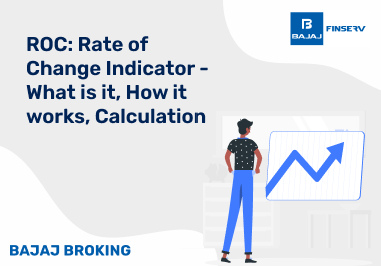What are Mutual Funds?
Mutual funds are collective investment schemes where funds from multiple investors are pooled together to create a diversified portfolio. These funds are managed by professional fund managers who invest in various assets such as equities, bonds and other securities based on the mutual fund's specific objectives. By purchasing mutual fund units, investors gain access to a professionally managed portfolio without needing extensive capital or expertise. The value of these units, known as Net Asset Value (NAV), changes according to the fund's performance. Bajaj Broking provides easy access to a wide range of mutual fund types, accommodating investors with varied risk tolerance and financial goals. Investing in mutual funds allows individuals to enjoy benefits such as diversification, liquidity and expert management while catering to different financial objectives and time horizons.
Different Types of Mutual Funds
There are different types of mutual funds based on various factors, which help simplify investment choices. Here’s a concise breakdown:
Asset Class: Mutual funds can be categorised into equity funds, focusing on stocks for high returns, debt funds investing in fixed-income securities for stable returns and hybrid funds that blend both to balance growth and safety.
Structure: The structural characteristics include open-ended funds, allowing continuous buying and selling at NAV, closed-ended funds with a fixed number of shares traded on exchanges, interval funds that combine features of both and exchange-traded funds (ETFs) that trade like stocks.
Investment Objective: Funds can be chosen based on goals such as growth-oriented funds for capital appreciation, income funds providing regular payouts or balanced funds seeking a mix of both.
Risk and Return: Different funds carry varying risk levels, from high-risk equity funds aiming for significant growth to low-risk money market funds focused on capital preservation.
Tax-saving Funds: Equity Linked Saving Schemes (ELSS) offer tax benefits, making them attractive for tax-savvy investors.
These categories empower investors to choose mutual funds that align with their risk tolerance and financial objectives. Bajaj Broking provides insights and a platform to explore various mutual fund types.
Types of Mutual Funds Based on Asset Class
Mutual funds can be categorised into various types based on the asset classes they invest in. Each type suits different investment objectives and risk appetites. Below are the major types explained in a pointwise manner:
- Equity Mutual Funds
These funds primarily invest in stocks or equity-related instruments. They carry a balanced risk-reward ratio over the long term.
- Debt Mutual Funds
These invest in fixed-income instruments like government bonds, corporate debentures, treasury bills, etc. They are relatively safer and offer regular income and a balanced growth profile.
- Hybrid Mutual Funds
Hybrid funds invest in a mix of equity and debt. They aim to balance risk and reward by diversifying across asset classes.
- Money Market Funds
These invest in short-term, highly liquid debt instruments like commercial papers and certificates of deposit. They are ideal for short-term investors seeking capital preservation.
- Commodity Funds
These focus on investing in commodities like gold, silver, and oil, or related stocks. Gold funds are a popular example in India.
- Real Estate Funds
These funds invest in real estate stocks, Real Estate Investment Trusts (REITs), or direct property. They are suitable for investors looking for property-related exposure without direct investment.
Types of Mutual Funds Based on Structure
Different types of mutual funds can also be categorised based on their structural characteristics, providing investors with various options suited to their needs.
Open-Ended Funds: These funds allow for the issuance of unlimited shares, enabling investors to enter or exit at any time based on the prevailing NAV. This structure offers flexibility and easy access to funds.
Closed-Ended Funds: In contrast, these funds issue a fixed number of shares through an initial public offering (IPO) and are traded on stock exchanges. This structure provides limited liquidity, as investors can only buy or sell shares on the exchange, not directly from the fund.
Interval Funds: Combining features of both open-ended and closed-ended structures, interval funds permit purchases and redemptions at predetermined intervals, offering a compromise between liquidity and stability.
ETFs: These funds trade like stocks on an exchange and aim to track an index or asset class. They provide liquidity and real-time pricing, making them attractive for active investors.
Bajaj Broking offers these structural options, enabling investors to choose the mutual fund types that best fit their investment objectives and preferences.
Types of Mutual Funds Based on Investment Objectives
Different types of mutual funds cater to specific investment objectives, allowing investors to align their portfolios with their financial goals. Here are some common categories:
Equity Funds: These funds focus on long-term capital growth by investing primarily in shares of companies. They tend to offer higher returns but come with increased risk.
Debt Funds: Aimed at generating steady income, these funds invest in bonds and other fixed-income securities, making them suitable for conservative investors seeking stability.
Balanced Funds: Offering a mix of growth and income, balanced funds diversify investments between equities and debt, appealing to those who want a balanced approach.
Income Trusts: These prioritise consistent returns through investments in fixed-income instruments, ideal for investors looking for reliable income streams.
Growth ETFs: These funds target capital growth by focusing on high-potential assets, suitable for risk-tolerant investors.
Liquid Funds: Designed for safety and liquidity, liquid funds invest in short-term securities, making them a good choice for managing cash reserves.
Tax-Advantaged Funds (ELSS): These funds provide tax benefits while pursuing growth opportunities, making them attractive for tax-conscious investors.
Bajaj Broking assists in exploring these mutual fund types, simplifying the process of aligning investments with individual goals.
Modes of Mutual Fund Investment
Investors can choose from different investment modes based on their convenience, risk appetite, and investment goals. The following table outlines the key modes of mutual fund investment along with their descriptions and suitability:
Mode of Investment
| Description
| Ideal For
|
Lump Sum
| A one-time investment of a fixed amount in a mutual fund scheme
| Investors with surplus funds
|
SIP (Systematic Investment Plan)
| Regular, small investments over time (monthly/quarterly)
| Salaried individuals, long-term investors
|
STP (Systematic Transfer Plan)
| Transfers fixed amount from one fund to another regularly
| Those shifting from debt to equity gradually
|
SWP (Systematic Withdrawal Plan)
| Allows periodic withdrawals from mutual fund investments
| Retirees seeking regular income
|
Dividend Reinvestment
| Dividends declared are reinvested in the same scheme
| Long-term investors
|
Direct Plan
| Investments made directly with AMC without distributor’s help
| Informed investors who want to save costs
|
Regular Plan
| Investment through intermediaries with added expense ratio
| New investors needing guidance
|
Schemes Based on the Maturity Period
Mutual fund schemes in India are often categorised based on their maturity periods, which determine how long the investments are held. This classification helps investors align their fund choices with their investment horizons and liquidity needs. Broadly, these include open-ended, close-ended, and interval schemes. Open-ended schemes offer flexibility and liquidity, while close-ended schemes are locked for a specific period and may be listed on exchanges. Interval schemes combine features of both by allowing transactions only during specific intervals.
Open Ended Scheme
Open-ended mutual fund schemes allow investors to enter or exit at any time, without a fixed maturity date. These funds are ideal for investors who value liquidity and flexibility. NAVs are published daily, and fund houses issue new units or redeem existing ones based on demand. Investors can invest or withdraw whenever they want, making them a suitable choice for long-term wealth creation. Open-ended funds are available across all asset classes like equity, debt, and hybrid. They are managed actively or passively, depending on the scheme’s structure and objective.
Close Ended Scheme
Close-ended mutual fund schemes come with a fixed maturity period, typically ranging from 3 to 5 years. Investors can subscribe only during the New Fund Offer (NFO) period, and units are then listed on stock exchanges for trading. These funds offer limited liquidity as redemptions are allowed only after maturity or by selling on the exchange. Fund managers can manage assets without worrying about unpredictable redemptions, which may offer more stability in portfolio construction. These are suitable for investors with a defined investment horizon and a willingness to stay invested until maturity.
Interval Scheme
Interval schemes blend features of both open-ended and closed-ended funds. These funds allow purchase or redemption only during specific time intervals decided by the fund house. Outside these periods, the fund remains closed to transactions. This hybrid model gives fund managers more control over cash flows and portfolio management. Such schemes often invest in fixed-income instruments and are ideal for conservative investors who are comfortable with limited liquidity. The structure is suitable for investors seeking moderately liquid investments without frequent market involvement, especially in short to medium-term horizons.
Types of Mutual Funds Based on Principal Investments
Mutual funds can also be classified based on their investment strategy or principal focus area. This classification helps investors choose a fund type that matches their investment objective and risk profile.
- Equity Schemes
Focus mainly on investing in listed equity shares across sectors or market capitalisations. They offer capital appreciation over the long term but come with higher risk.
- Debt Schemes
Invest in fixed-income securities such as bonds, debentures, and treasury bills. They aim for capital preservation and regular income with lower risk.
- Hybrid Schemes
These invest in both equity and debt to balance risk and reward. Hybrid funds are suitable for moderate-risk investors seeking a balanced portfolio.
- Solution Oriented Schemes
Tailored for specific financial goals like retirement or child’s education. These come with long-term lock-in periods and offer disciplined investment paths.
- Other Schemes
Include index funds, ETFs, Fund of Funds, and sectoral/thematic funds. These schemes provide niche investment opportunities or passive strategies for various investor profiles.
Equity Schemes
Scheme Type
| Description
| Suitable For
|
Large Cap Funds
| Invest in top 100 companies by market capitalisation
| Stable long-term growth
|
Mid Cap Funds
| Invest in mid-sized companies ranked 101–250 by market cap
| Higher returns with moderate risk
|
Small Cap Funds
| Invest in companies beyond the top 250
| High growth potential, high risk
|
Multi Cap Funds
| Invest across large, mid, and small-cap stocks
| Diversified equity exposure
|
ELSS (Tax Saving Funds)
| Equity Linked Saving Scheme with 3-year lock-in for tax benefits under Section 80C
| Tax-saving with equity exposure
|
Debt Schemes
Scheme Type
| Description
| Suitable For
|
Liquid Funds
| Invest in short-term instruments up to 91 days
| Parking surplus funds
|
Ultra Short Duration
| Invest in instruments with 3–6 months duration
| Short-term capital preservation
|
Short Duration Funds
| Invest in instruments with 1–3 years average maturity
| Moderate duration, low risk
|
Gilt Funds
| Invest only in government securities
| Risk-averse, long-term investors
|
Credit Risk Funds
| Invest in lower-rated instruments for higher yield
| High-risk, return-seeking investors
|
Hybrid Schemes
Scheme Type
| Description
| Suitable For
|
Aggressive Hybrid Funds
| Invest ~65–80% in equity, rest in debt
| Moderately high-risk investors
|
Conservative Hybrid Funds
| Invest ~75–90% in debt, rest in equity
| Conservative investors
|
Balanced Advantage Funds
| Dynamic allocation between equity and debt based on market conditions
| Market-timing investors
|
Arbitrage Funds
| Use price differences in cash and derivatives markets to generate low-risk returns
| Low-risk short-term investors
|
Solution Oriented Schemes
Scheme Type
| Description
| Suitable For
|
Retirement Funds
| Designed for long-term retirement planning with lock-in till retirement age
| Investors with retirement goals
|
Children’s Funds
| Focus on wealth creation for child’s future education/marriage
| Parents investing for long-term goals
|
Other Schemes
Scheme Type
| Description
| Suitable For
|
Index Funds
| Replicate benchmark indices like Nifty 50 or Sensex
| Passive investors
|
ETFs
| Traded on stock exchanges, mimic index or commodity performance
| Real-time traders or passive investors
|
Fund of Funds
| Invest in other mutual fund schemes
| Diversification seekers
|
Sector/Thematic
| Invest in specific sectors like IT, Pharma, or themes like ESG or infrastructure
| Sector-focused high-risk investors
|
Benefits of Mutual Funds
Mutual fund types offer numerous benefits, including:
Diversification: Spread investments across various assets to minimise risks.
Professional Management: Benefit from the expertise of experienced fund managers.
Liquidity: Easy buying and selling of units at NAV, ensuring quick access to funds.
Affordability: Low entry requirements make investing accessible to everyone.
Risk Management: Diversification and expert management reduce risks effectively.
Flexibility: A wide variety of mutual funds to suit different goals and risk appetites.
Regulatory Control: Market regulations provide investor protection and transparency.
Potential for Higher Returns: By investing in equities and other growth-oriented assets, mutual funds can offer higher returns over the long term compared to traditional savings options.
Convenience: Mutual funds simplify the investment process, allowing investors to manage their portfolios through online platforms, making it easier to track performance and make adjustments.
Tax Benefits: Certain mutual funds, such as Equity Linked Savings Schemes (ELSS), offer tax deductions under Section 80C of the Income Tax Act, providing an additional incentive for investors.
Bajaj Broking enables investors to access these benefits by offering a range of mutual fund types.
Conclusion
Mutual funds provide a versatile and professionally managed investment avenue for achieving various financial goals. By exploring different types of mutual funds based on asset class, structure, and investment objectives, investors can choose suitable options that match their risk tolerance and growth aspirations. Bajaj Broking offers a reliable platform for selecting and investing in mutual fund types, ensuring investors have the necessary guidance to build a diversified and profitable portfolio. Understanding these mutual funds simplifies the decision-making process, empowering investors to confidently navigate their financial journeys. Additionally, with the right information and support, investors can optimise their returns while effectively managing risk, making mutual funds an attractive choice for both novices and seasoned investors.















